Nitish Deshpande
A generalization of the achievable rate of a MISO system using Bode-Fano wideband matching theory
Oct 15, 2023

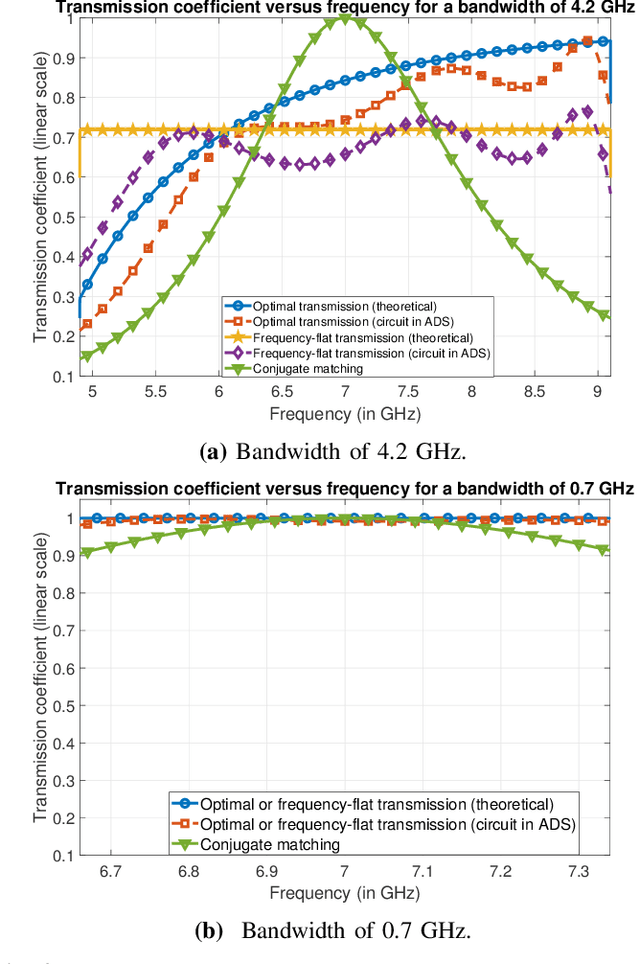
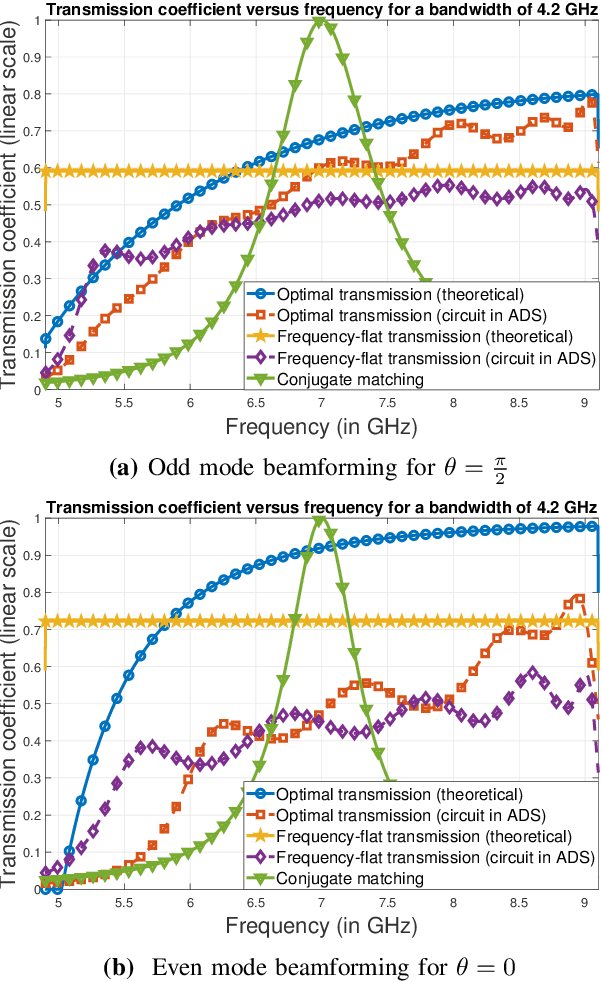
Abstract:Impedance-matching networks affect power transfer from the radio frequency (RF) chains to the antennas. Their design impacts the signal to noise ratio (SNR) and the achievable rate. In this paper, we maximize the information-theoretic achievable rate of a multiple-input-single-output (MISO) system with wideband matching constraints. Using a multiport circuit theory approach with frequency-selective scattering parameters, we propose a general framework for optimizing the MISO achievable rate that incorporates Bode-Fano wideband matching theory. We express the solution to the achievable rate optimization problem in terms of the optimized transmission coefficient and the Lagrangian parameters corresponding to the Bode-Fano inequality constraints. We apply this framework to a single electric Chu's antenna and an array of two electric Chu's antennas. We compare the optimized achievable rate obtained numerically with other benchmarks like the ideal achievable rate computed by disregarding matching constraints and the achievable rate obtained by using sub-optimal matching strategies like conjugate matching and frequency-flat transmission. We also propose a practical methodology to approximate the achievable rate bound by using the optimal transmission coefficient to derive a physically realizable matching network through the ADS software.
A wideband generalization of the near-field region for extremely large phased-arrays
Jun 30, 2022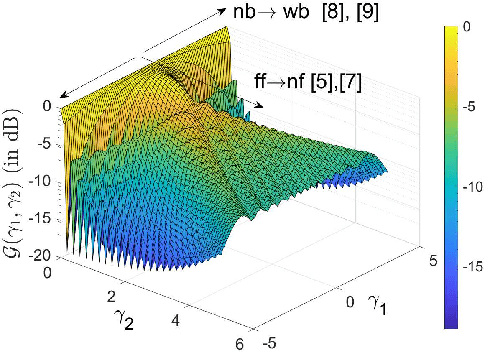
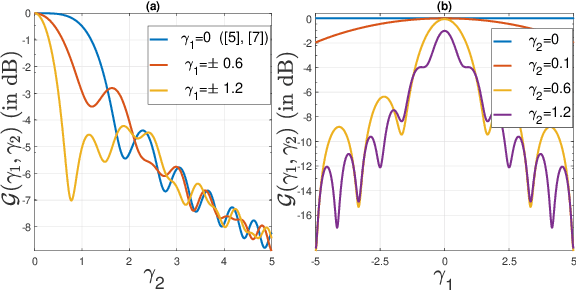
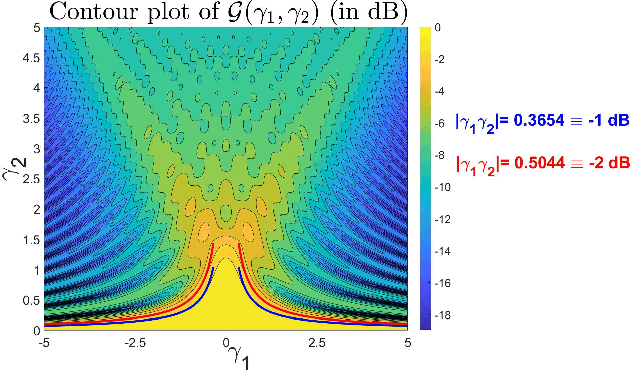
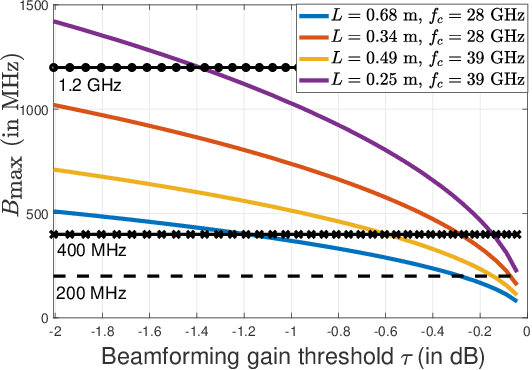
Abstract:The narrowband and far-field assumption in conventional wireless system design leads to a mismatch with the optimal beamforming required for wideband and near-field systems. This discrepancy is exacerbated for larger apertures and bandwidths. To characterize the behavior of near-field and wideband systems, we derive the beamforming gain expression achieved by a frequency-flat phased array designed for plane-wave propagation. To determine the far-field to near-field boundary for a wideband system, we propose a frequency-selective distance metric. The proposed far-field threshold increases for frequencies away from the center frequency. The analysis results in a fundamental upper bound on the product of the array aperture and the system bandwidth. We present numerical results to illustrate how the gain threshold affects the maximum usable bandwidth for the n260 and n261 5G NR bands.
 Add to Chrome
Add to Chrome Add to Firefox
Add to Firefox Add to Edge
Add to Edge